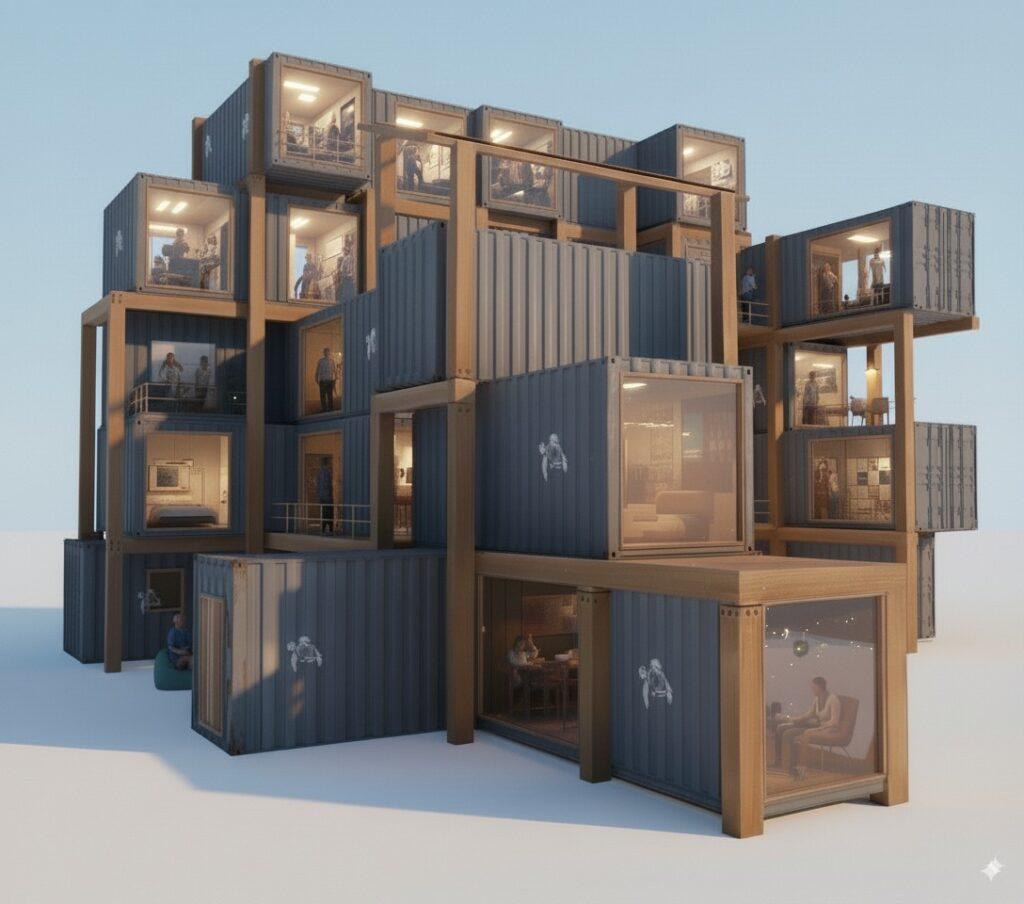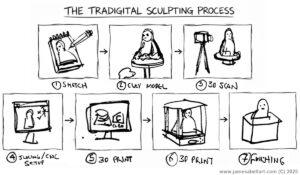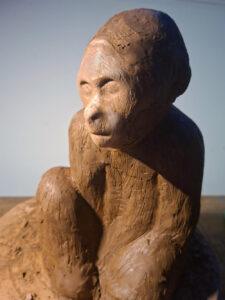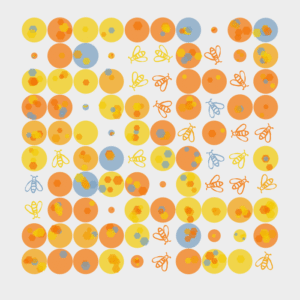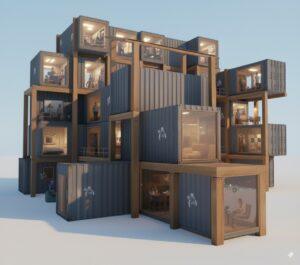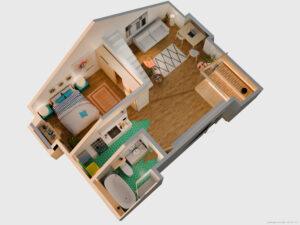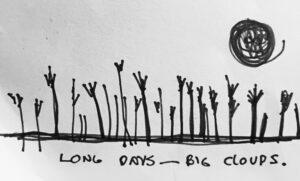Nano Banana:
Architectural Revolution?

I often find myself hating to work with 3D CGI and graphics. I find my creative flow restricted. In these times, I think should just make traditional drawings and sculpture work.
However, 3D is such a powerful tool I always return to for both commercial and creative use.
I always strive to see how I can reduce all the technically slow aspects I find slow me down in mind and spirit and instead, focus on the creative freedom or “flow state” of the creative process.
It is September 2025 and Google has just released their latest AI tool – Nano Banana (officially known as Gemini 2.5 Flash Image).
It feels quite a leap ahead with AI from my tests so fat in consistency and what it can do. Lets take it for a test drive here. You can read the official announcement on the Google Developers Blog.
There are also many you tube videos about how it can be used with 3D visualization such as this recent one.
This consistent and fast AI tool has massive potential in the creative process for both imaginary world building I explore in my Cities Of The Imagination book but also for more real world visualization projects. Using this would have greatly helped my recent apartment visualization.
Traditional visualization pain points
I want “Zero wasted effort. Maximum creative flow.”
I want to automate the grind, save time being wasted in nightmare technical wastelands and speed up my work. To me, Nano Banana feels like as tool that will do this the most at this point.
How can it solve some of the main pain points when making 3D worlds and visualization? Let’s test it out…
Nano Banana Will Visualise States In Time:

Before/After: Test Driving Nano Banana:
For a while, I’ve had the desire to experiment with Industrial Shipping container design for habitation and social center concepts. Shipping crates are a great example of recycling existing structures for building. The fact that they can be stacked and exist already as modular units creates many great possibilities.
The following stages summarize what I managed to do over a whole Saturday testing out how Nano Banana could help with the 3D CGI process in September 2025 –
a) Concept Sketch Crates

b) Blender Development Concept
After initial sketch ideas and a mood board taken from Google images, I imported some free 3D crate models and started to shift forms around in Blender and make some other simple pieces of geometry such as wooden struts and solar panels. I always really enjoy this part of the 3D modelling process. Its pure flow, 3D space and idea growth evolution.


C) Jump Ship To Nano Banana
Usually, after this concept blocking in stage, I would then proceed to time consuming model refining an UVW texture mapping. This is where I jumped ship to Google Nano Banana.

By uploading the concept screenshots from Blender and using prompts for the model development I found I could easily develop the structure, construction and materials of this shipping crate house.
You can see in the image above, it will render out different angles from the single render you give. I think that is amazing as the other views show extreme consistency with the 3D structure.

The Nano Banana feels very consistent. It is very close to employing another 3D artist for example ” add logos of a sea turtle with white paint on each crate “, you can see the result for that one in the image above.
In the future, I hope as artists and designers movements and gestures will be able to used more than prompts. I feel that word prompts can feel like a barrier when making visual things.
C) A Complete Change Of Structure

This was a major evolution. I decided to ask Nano Banana to expand the structure crates using the same construction, structure and materials methods. It came up with this, amazing!
So it means I don’t have to go back to Blender and make a shape like this from the existing blocks. Nano Banana does this for me.
You can see expanding the structure, the rooms inside all differ. They are not just carbon copies of the first interior.

It even allowed me to –
” render the structure at golden hour ” and ” add people inside the building rooms “.
D) Ability To Make Nearly Accurate Technical Drawings From The Renders
Another astounding thing is that Nano Banana was able to do here was to tell it to –
“make technical drawings of the structure “
I feel the solution was with fairly close solutions to what a professional working drawing. At the least, CAD technicians could use these as a proxy reference. It even seamed to give accurate dimensions

With a prompt like
” Make a detailing technical drawing for one of the crates, side view”.
It also allows a fairly good approximation of detailing technical drawings. In this case, showing one of the industrial crate units. Admittedly some of the words are incorrect. However as a base template to turn into a proper CAD drawing feels very certain.

E) Going Further
I will look at using Google Nano at a later point to make 3D models from the images it creates. At this point you still need a third party image to 3D creator such as Hitem3D to turn the images to 3D models. Then you can take them back into Blender.
The first image below shows the 3D model result in Hitem. The second shows it imported into Blender.
At this stage of AI technology the model is not perfect. However, it is useable for non close up work.
In turn, this model could be adapted in Blender and you could repeat the process again with a new structure back into Nano Banana.
Alternatively, you could take it to a Realtime engine such as Unreal or use Sketchfab or ThreeJS for Browser based 3D. I will be using the latter for this very soon, stay tuned!


E) Conclusion The future: An Iterative Flow?
This project took me about half a day to complete using Nano Banana. AI develops at a lightning rate so I am sure that this will get even better.
If I were to do this using Blender or 3DS Max and Substance Painter, it would take me at least 4 whole days. The extra time taken would involve what I feel are “medieval” processes compared to AI.
In the future, I would like to see Nano Banana AI embedded properly into Blender. There are addons now for AI into Blender is around now. Not for Nano Banana however.
There are negatives for workflow however as it exists now. The main point I feel is that I find text prompting is something I would rather use less and more a visual approach by being able to move and develop the AI result in a GUI interface.
Whatever happens, the future possibilities of 3D visualization and 3D as a whole for individuals will be extremely exciting for those who want to experiment with it and integrate it into the their creative process.
Yes it will replace many creative jobs, we have to adapt.
– James Abell September 07 2025

Links –
Google Nano Banana
An image to 3D AI mesh creator – Hitem
The open source 3D suite – Blender
I used Canva to put the animated construction GIF together
Shipping Crate 3D Models used in Blender concept stage
Sign up to my newsletter below or e-mail me at info@jamesabellart.com if you would like 3D training or to commission me for art and design work.


